Enjoying a day exploring Trogir Croatia
We spend a day trip to explore Trogir, Croatia a historic island that is easily connected to the mainland by short bridges and inside the walled city you can visit historic and cultural sites, open public plazas and narrow promenades, shops and galleries and other unique attractions to explore in the Old town center.
Just a short drive and pleasant drive from the large port city of Split, Croatia is the small island of Trogir which is practically situated next to the mainland. Originally A very colorful city with a historic past, Trogir is a Unesco World Heritage site and a very easy town to walk through and enjoy the many Trogir attractions and historical landmarks around the isand. You can easily see Trogir in one day and do all the sightseeing in Trogir, have a nice meal and visit the main sites in one quick trip to this compact little island.
Founded originally as a Greek colony called Tragurion (island of goats) founded as a trading settlement in the 3rd century. In succession, the island past through many rulers to include: the Romans, Saracens, Venetians, Hapsburgs and then Croatian rulers. The architecture of the town has many beautiful influences including: Medieval, Romanesque, Renaissance, Baroque influence of the Venetian time frame and Gothic periods blending into a very eclectic and colorful town filled with many architectural gems.
The original street plan follows Hellenistic planning styles and then morphed into narrow and maze like alleys and streets during Medieval periods. It’s fascinating walking around and just getting lost, then finally walking out the city walls to the broad and sunny promenade facing the river and the Croatian mainland and a wonderful area to explore all the Trogir attractions and historic sites of the city.
A Day in Trogir, Croatia: Exploring the Historic Beauty of this Adriatic Gem and many local attractions
Explore the main tourist attractions in Trogir area
Where is Trogir located at in Croatia?
Trogir is located in Croatia, specifically in the Split-Dalmatia County. It is situated on the central Adriatic coast, near the city of Split.
How to get to Trogir?
There are several ways to get to Trogir, Croatia:
By Air: The nearest airport to Trogir is Split Airport (Resnik), located about 5 kilometers away. From the airport, you can take a taxi, a private transfer, or a local bus to reach Trogir.
By Car: Trogir is well-connected by road. If you are coming from Split, you can take the D8 coastal road and follow the signs to Trogir. The journey takes around 30 minutes, depending on traffic conditions. If you’re driving from other parts of Croatia, you can follow the major highways to reach Trogir.
By Bus: Trogir has a well-established bus network connecting it to other cities in Croatia. You can take a bus from major cities like Split, Zagreb, or Dubrovnik to reach Trogir. The bus station in Trogir is located near the city center.
By Ferry: If you are on one of the nearby islands like Brač or Hvar, you can take a ferry to Split and then continue by bus or car to Trogir. Split has regular ferry connections with various islands and other coastal cities in Croatia.
Once you arrive in Trogir, the town center is compact and easily walkable, so you can explore on foot. Taxis and local buses are also available for transportation within the town and to nearby areas.
The main sites and landmarks worth visiting in Trogir
Trojir is mostly promenades and small hidden alleys and streets so you have to walk around the city on foot. It is small and compact so you can easily cover most of these main attractions below:
- The historical city core and squares including a mixture of architectural styles and over 10 churches
- The city walls (15th century) and the main city gate (17th century)
- Kamerlengo Fortress (15th century)
- The Cathedral (13th century)
- The Duke’s Palace (13th century)
- The city loggia from 15th century
- The big and small palaces Cipiko from the 15th century
Here are some more photo highlights of the town:
Main square and city hall
The main square in the center of town houses the city hall, main cathedral and many other civic and historic architectural buildings date back from many historic periods of Trogir’s past. Have a seat in the main square and you will be serenaded with many different Acapella men’s chorus groups entertaining the crowds for tips or sales of their chorus cds. It’s nice to hear music sounding off around the historic Trogir attractions and landmarks with beautiful sounds that you can walk to and hear what is happening.
Marina and promenades at Trogir
The popular spot is along the marina lined with many outdoor cafes serving the freshest seafood and Dalmatian specialties of the area. It’s also a perfect spot for people watching, visiting some of the historic landmarks or just enjoying the gorgeous views of the Dalmatian coastline. Walking along the waterfront promenade is a fantastic Trogir viewpoint to the city ramparts, ocean and sailing vessels and just the wonderful outdoor vibe being outside and enjoying some time exploring this colorful city.
Weather and best time to visit Trogir, Croatia
Trogir, Croatia, experiences a Mediterranean climate, characterized by hot, dry summers and mild, wet winters. The best time to visit Trogir largely depends on personal preferences and the activities you plan to engage in. Here’s a breakdown of the weather and the recommended times to visit:
Summer (June to August): Summer is the peak tourist season in Trogir, with warm to hot temperatures ranging from 25°C to 35°C (77°F to 95°F). The weather is generally sunny and ideal for beach activities and outdoor exploration. The sea temperature is also pleasantly warm, perfect for swimming. However, it can be crowded and accommodation prices tend to be higher during this period.
Spring (April to May) and Autumn (September to October): These shoulder seasons offer pleasant weather with temperatures ranging from 15°C to 25°C (59°F to 77°F). The crowds are thinner, and the prices for accommodation and activities are usually more affordable. Springtime brings blooming flowers and lush green landscapes, while autumn showcases beautiful fall colors. These seasons are great for sightseeing, exploring the historic sites, and enjoying outdoor activities.
Winter (November to February): Trogir experiences mild winters with temperatures ranging from 5°C to 15°C (41°F to 59°F). It is the off-peak season with fewer tourists, making it an excellent time to visit if you prefer a quieter atmosphere. However, some businesses and attractions may have limited operating hours. While the weather is generally mild, there is a higher chance of rain during this period.
Fortress Kamerlengo
Fortress Kamerlengo is a historical fortress located in Trogir, Croatia. It was constructed in the 15th century during the Venetian rule and served as a defensive stronghold for the city. The fortress was named after the Venetian captain who oversaw its construction.
Fortress Kamerlengo features a robust stone structure with thick walls, towers, and battlements. Its strategic position offers panoramic views of the surrounding area, including the Adriatic Sea and the old town of Trogir. The fortress played a significant role in defending the city against various threats throughout its history.
Today, Fortress Kamerlengo stands as a popular tourist attraction, showcasing a blend of medieval architecture and stunning views. Visitors can explore the fortress, walk along its walls, and discover its inner courtyard. The fortress often hosts cultural events, exhibitions, and concerts, adding to its vibrant atmosphere. Its historical significance and captivating architecture make it a must-visit destination for travelers exploring Trogir.
Daily farmers market at Trogir
Just outside of the island next to one of the main bridge crossings to Trogir is the daily farmers market. It’s worth a visit to try some local delicacies and other prepared foods or try some of the in season fruits from farms nearby.
At the farmers market, you can find a wide variety of fruits, vegetables, herbs, and spices, all sourced from local farms and gardens. The stalls are filled with colorful displays of seasonal produce, inviting you to explore the flavors and tastes of the region. From juicy tomatoes and fragrant herbs to succulent fruits and freshly picked vegetables, the market offers a delightful array of options.
In addition to fruits and vegetables, you can also find an assortment of homemade products, such as olive oil, honey, cheeses, cured meats, and traditional Croatian delicacies. Local artisans and vendors often showcase their crafts and handmade goods, adding an extra dimension to the market experience.
Local foods of Trogir
What are the specialties to eat around Trogir
Trogir and its surrounding region offer a delightful array of specialties to satisfy any food lover. Here are some local delicacies and specialties to try:
Dalmatian Peka: Peka is a traditional Croatian dish that consists of slow-cooked meat, usually lamb or veal, and vegetables. It is prepared in a covered baking dish, slowly roasted under a bell-shaped lid over hot coals or in the oven. The result is tender, flavorful meat with succulent vegetables.
Seafood and Fresh Fish: Being a coastal town, Trogir boasts an abundance of fresh seafood. Don’t miss the opportunity to try dishes like grilled fish (brudet), octopus salad (hobotnica salata), or black risotto (crni rižot) made with cuttlefish ink. The flavors of the Adriatic Sea truly shine in these dishes.
Trogirski Rafioli: Trogir is famous for its sweet treat called Rafioli. These are small, crescent-shaped almond-filled pastries, often flavored with orange zest and a hint of brandy. They are traditionally served during special occasions and holidays, but you can find them in local bakeries and pastry shops.
Pasticada: Pasticada is a slow-cooked beef dish marinated in red wine and aromatic herbs. The meat is then cooked in a rich sauce made from the marinade and served with homemade gnocchi or traditional Croatian pasta called njoki. It’s a hearty and flavorsome dish that represents the region’s culinary heritage.
Prsut (Dalmatian Prosciutto): Prsut is a dry-cured ham that is an integral part of Croatian cuisine. Dalmatian prsut is renowned for its distinct flavor and texture. It is typically served thinly sliced as an appetizer or part of a charcuterie board, accompanied by local cheeses, olives, and homemade bread.
Dalmatian Olive Oil: Dalmatia is known for its excellent olive oil production. The region’s olive groves yield high-quality extra virgin olive oil with a unique flavor profile. Drizzle it over fresh salads, use it for dipping bread, or incorporate it into traditional dishes to enhance the flavors.
If you do visit Trogir here are more details:
The main airport serving the Split area is about 4 miles from Trogir
There are regular bus routes servicing the Trogir, airport and Split corridor. Or an easy thing would be to rent a car to visit Trogir and a drive along the coastline. You can rent a car with Holiday Autos.com to book your rental in the Dalmatian coastal areas.
Parking is easy with available paid parking lots on the mainland side, and you access the island through foot bridges.
The island is relatively small, even if you get lost, you will eventually find the marina or exit areas back to the entrance gates.
Save your appetite for a nice seafood meal along the waterfront or any of the unique restaurants in the heart of the inner city walls.
Pin and save this post for later
For more posts on visiting the towns and attractions around Croatia
A free Split city tour of the Diocletian Palace
Local foods of the Dalmatian coastline
Split’s most photo worthy spots to photograph
Conclusion to Enjoying a day in Trogir Croatia
In conclusion, Trogir, Croatia, offers a captivating blend of history, natural beauty, and gastronomic delights that make it an ideal destination for a day of exploration. To fully enjoy your day in Trogir consider the attractions to visit around town, enjoy the local specialties and cruise the gorgeous back alleys, squares and promenades in town, it’s almost fun to get lost and find the main squares in town.
Thanks for visiting today and checking out this post on Enjoying a day in Trogir Croatia. I hope you are inspired to plan a visit and enjoy these wonderful attractions and activities. If you enjoyed the images and post, could you please share it with any of the social media buttons located around the post.


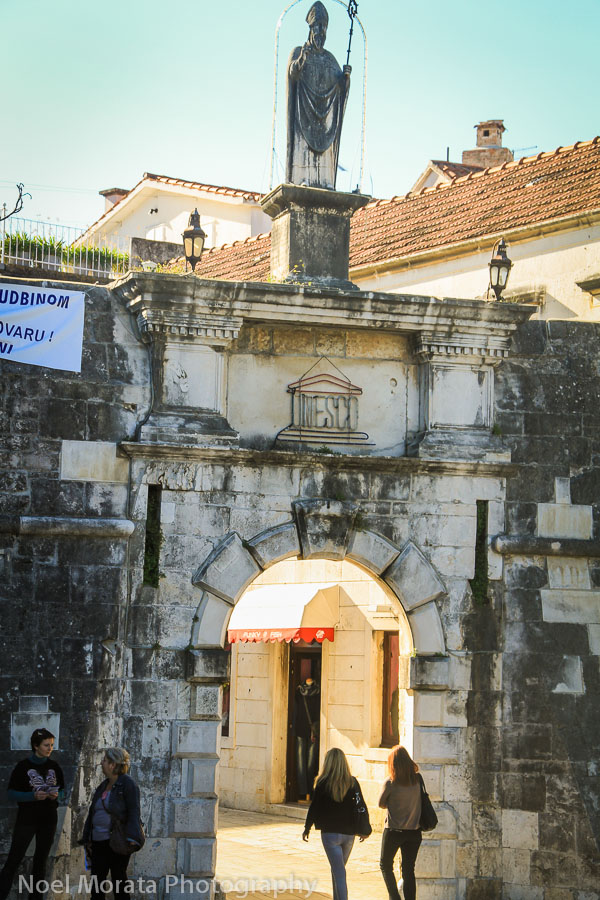
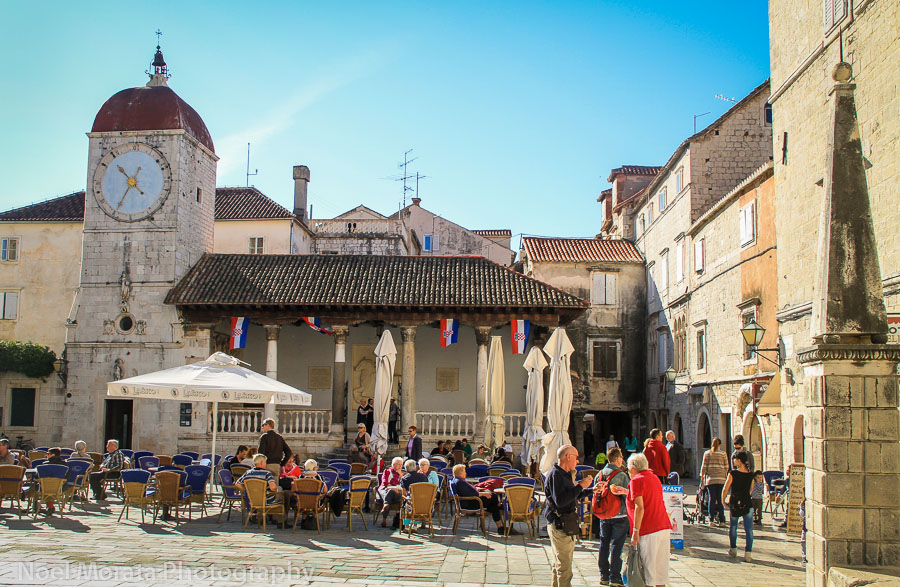
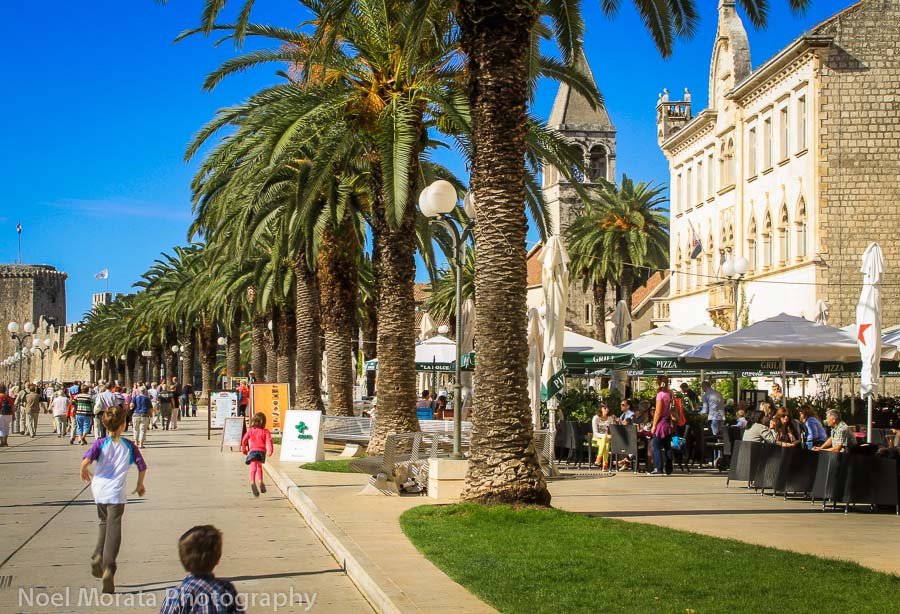
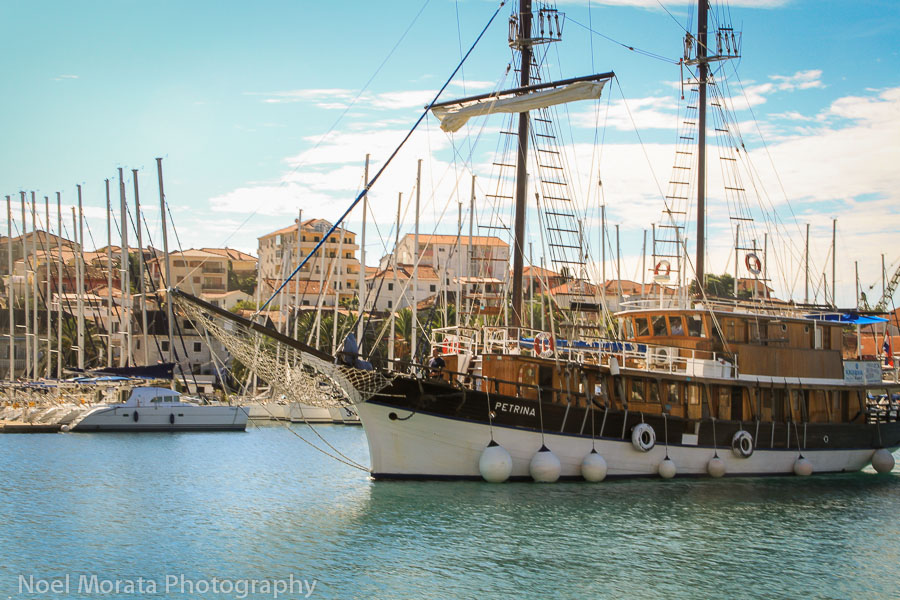
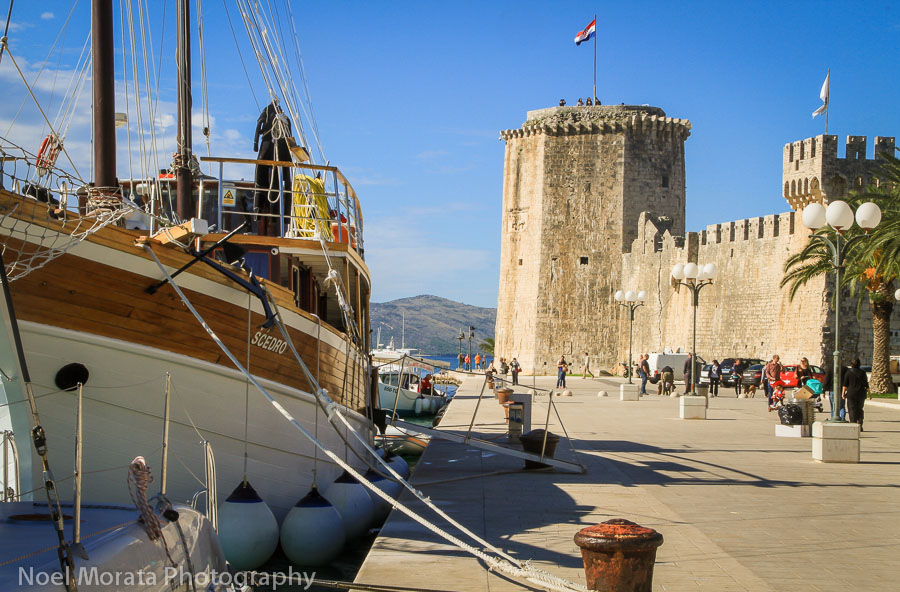
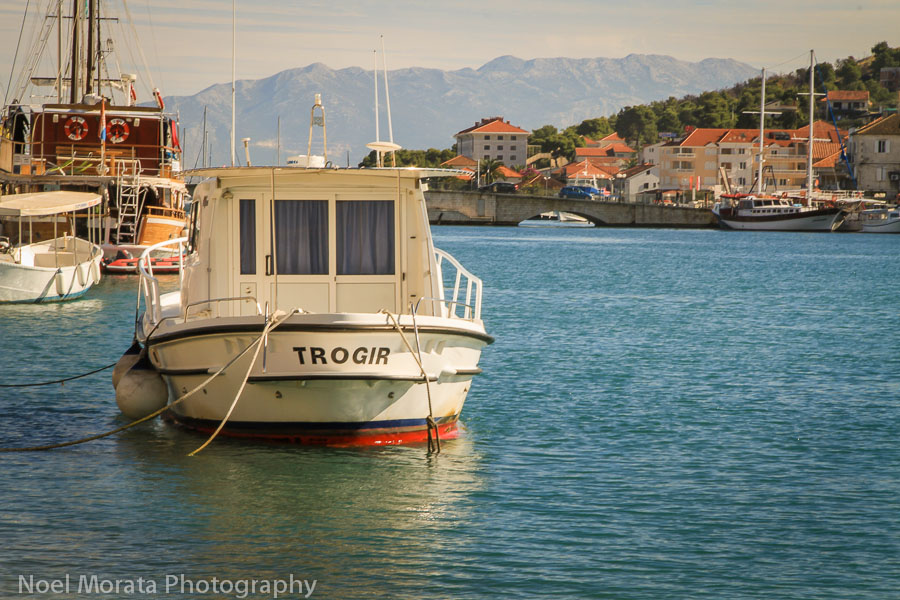
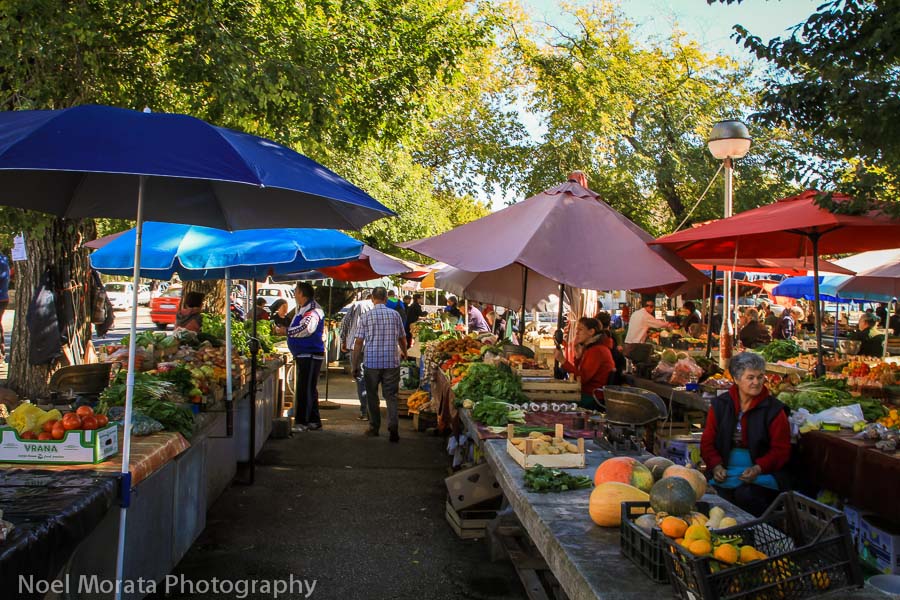
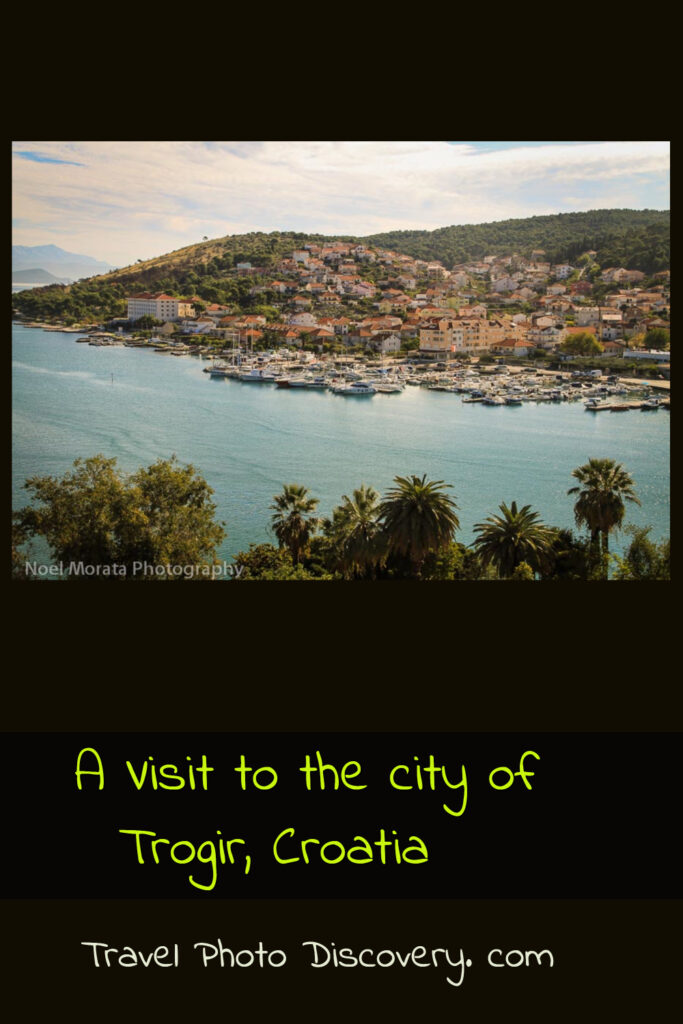
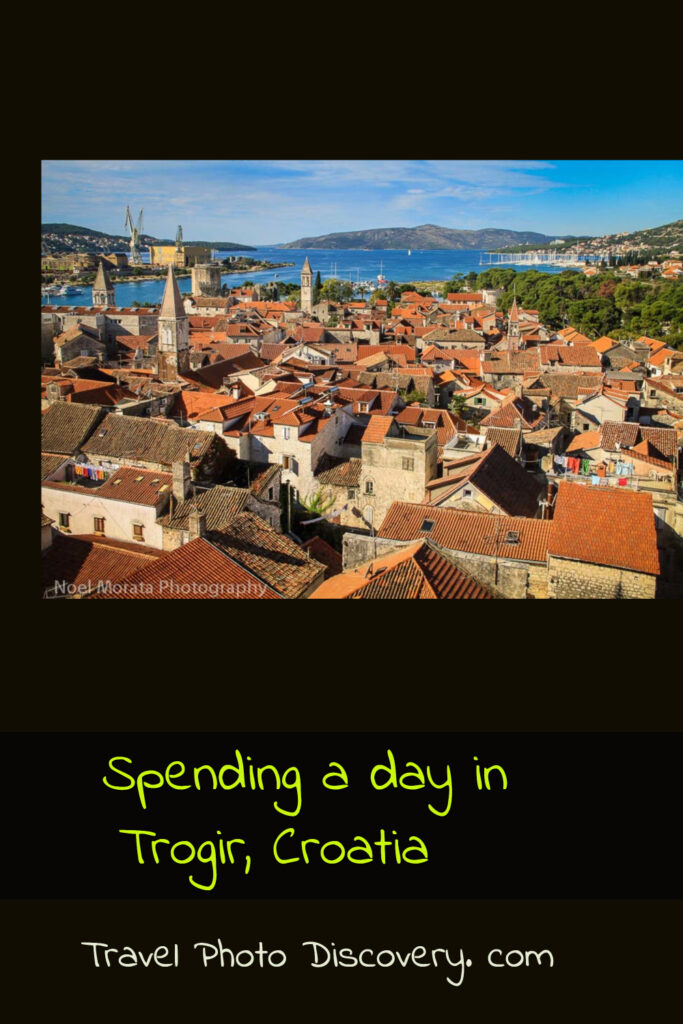
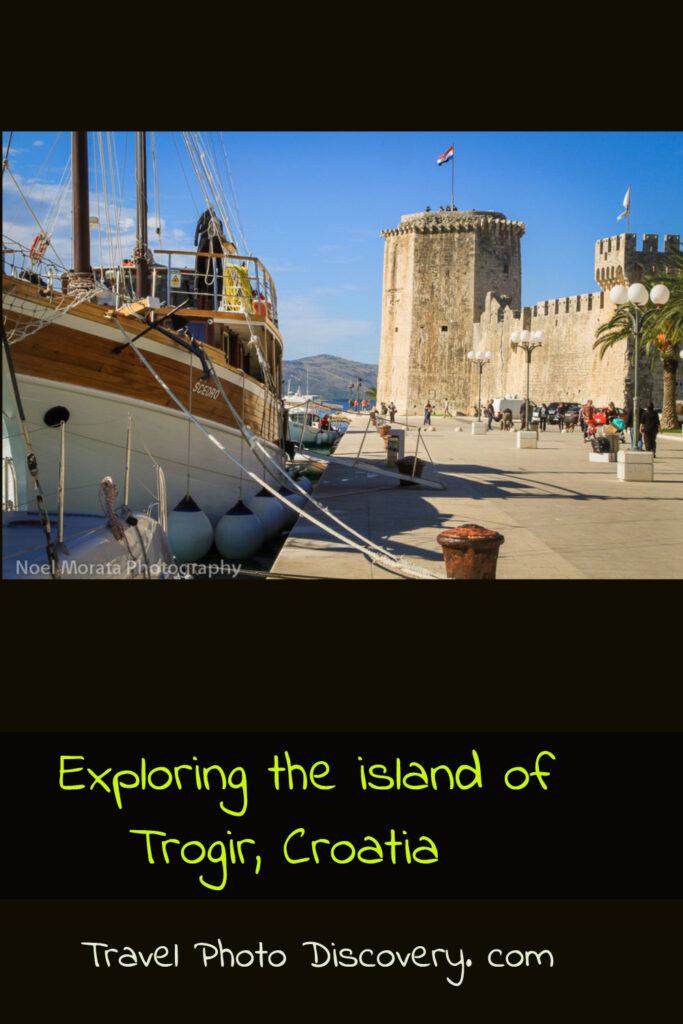

Yet another postcard perfect town beckoning me to visit Croatia. Is there anywhere in this country that isn’t impossibly scenic?
Looks so pretty!
Croatia is at the top of my list of places to go. This just makes me want to go more.
I have yet to travel to Europe, I love to see these beautiful pictures of a culture that’s so different from most of my travel experiences so far. Thanks!
I love that photo over the city from the bell tower! Were there a lot of tourists up there?
Beautiful. I cannot wait to go back to Croatia to explore beyond Dubrovnik. Especially love the promenade and farmer’s market photos.
Hey Noel! yet another post full of great images from you. I spent a rainy day in the mountains and coming back home and reading your post really cheered me up! Love the pic of the sailboat and the market. Thanks for sharing, have a lovely day!
What a gorgeous island, Trogir. I remember many years ago spending a lot of time in Dubrovnik and being fascinated and in awe. Your post brings back some wonderful memories.
Yet another stunning Croatian town to add to my itinerary…
It looks like one of those picture perfect postcard towns. I like the outdoor cafe seating, and I wish my market looked like that. I may be going back and rereading your Venice posts closer as my tween is proposing it as a summer destination.
Love the boat and marina shot. Croatia always looks picture perfect. I hope to get there soon. Is it all so perfect or does it have bad hair days too?
Everything did seem to be too perfect, although I was there in the off season so it was really nice and not typically crazy with the hoards of .tourists visiting the area
I loved Trogir…loved it. I didn’t find the best food there…
I ended up snacking on local treats at the market but found a few spots on my list to try for another visit, thanks for connecting Corinne